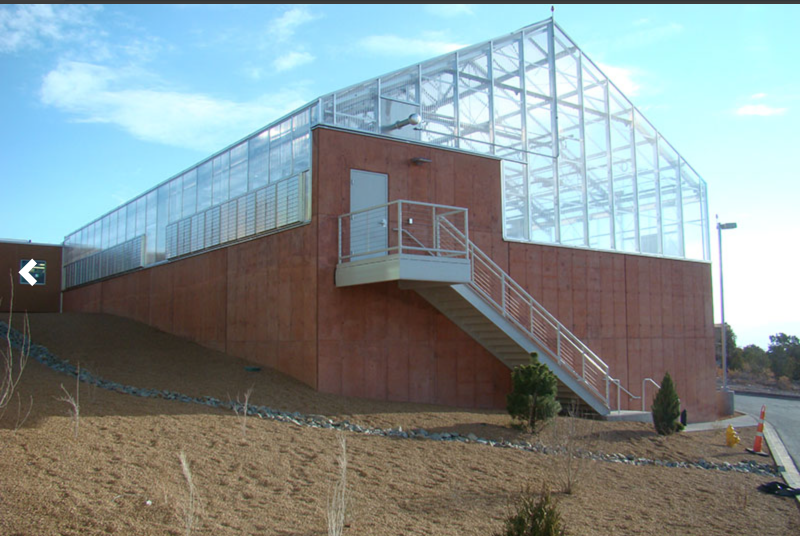It all started with a good idea, willing partners, and a $5,000 corporate-sponsored research project. The idea germinated, blossomed, and grew into a $300,000 greenhouse and the formation of a marine algae research facility. The Maine Algal Research and Innovation Accelerator, MARIA, will be constructed on the Bigelow Laboratory for Ocean Sciences campus in East Boothbay this spring. The Maine Community Foundation is providing funds for the construction project and scaling up of activity.
The path from a seeded idea to a full-scale greenhouse and business accelerator was a circuitous one and makes for a story worth telling.
MTI provided critical seed money
Mike Lomas, Director of the National Center for Marine Algae and Microbiota (NCMA) at Bigelow Laboratory, had established a successful relationship with Field Energy LLC, a private company looking to develop a process to improve the quality of fatty acid products. Fatty acids are essential for healthy brain development in children and reduce cardiovascular diseases, lower blood pressure, and prevent development of hypertension. There is a huge potential market for better products. NCMA and Field Energy LLC developed a research plan. The research is now ongoing at the Laboratory, with additional support from Maine Technology Institute (MTI) and the U.S. Department of Agriculture, with analysis being done by Bigelow Analytical Services, another core facility of Bigelow Laboratory.
Since the partnership was well established and working smoothly, the seed money provided by MTI gave Lomas the opportunity to explore other options and expand upon the idea of “what if?” What if there was a place that could provide one-stop shopping, so to speak, for algal research and development. What if the money could be found to build a pilot-scale facility that could grow enough algae to explore new commercial algal-based products for society’s benefit as well as that of Maine aquaculture? What if such a facility could be built on site on Bigelow Laboratory’s campus so it could take advantage of the collective expertise of its scientists?
The “what ifs” resulted in the creation of MARIA, a facility that could not only grow algae, but be a center for developing universal algal standards, exploring new and varied ways that algae could be incorporated into products.
“The seed funding was critical. It truly gave us the opportunity to germinate the idea to see if it might bear fruit,” explained Lomas. “We used the funds to flesh out the concept, figure out what projects might be feasible with a greenhouse on site, and how many might be required to make the project financially stable. Then we went on to the bigger questions of how large a greenhouse had to be, how we would finance it, how many people would be needed to support it, and a whole slew of other questions that come along with starting up a new venture of this sort.”
Impact investment funds for a big idea
The MTI funds were soon supplemented by a sizable, roughly $100,000, federal grant and ultimately culminated in the award of a $300,000 loan from the Maine Community Foundation’s Farms, Fisheries and Food Fund. This support will provide for the construction of a roughly 3,000 square foot pilot-scale production greenhouse on Bigelow Laboratory’s ocean science campus on the Damariscotta River.
NCMA has already constructed a mini-scale production facility in the Seawater Suite at Bigelow Laboratory to test growth processes for scaling up once the larger facility is operational.
“My hope is that the greenhouse will serve as a flywheel that drives innovation. It will accelerate the process of taking ideas for natural products created using micro and macro algae and turning them into concepts,” added Lomas. “The greenhouse will allow us to help other entrepreneurs regardless of where they might be in the process – from those with an idea and money but no experience, to those who know exactly what they want to do but need a place to do it. Wherever they are on that continuum, they can come in, consult with our experts, and we will be able to grow the product and provide the services they need.”
Lomas sees MARIA and the greenhouse as providing both product and consulting services as well as being flexible to respond to customer needs. “For example, someone might come in and wants to grow organism X. We may not know how to grow organism X, but we have the infrastructure and culturing experience to help them figure out the best way to grow the organism. Conversely, someone may come in and want to grow an organism on a larger scale to test commercial and financial viability. We can help them achieve that here. We can fill the gap of whatever our customers need to help them achieve new and viable products.”
Because of the quantity of algae it will be able to produce, MARIA also will be developing algal standards by providing a consistent source of material. These standards could range from mock-community genome standards to algal toxin standards to algal pigment standards that could be implemented by NASA-based ocean color investigators to other metabolite standards. Such standards are critical for research and product development so there is a basis upon which to measure quality, composition, and other features.
Ground will be broken for the greenhouse in spring/early summer 2016, which is expected to be operational by late summer/early fall.
According to Lomas, MARIA is but one of many positive examples of the successful implementation of Bigelow Laboratory’s strategy to apply its state-of-the-art knowledge and expertise to providing real world solutions. “We are exceedingly grateful to MTI, the US Federal Government, and the Maine Community Foundation for helping us realize this vision. Ultimately, it will benefit the people of Maine and perhaps contribute to improved health in the nation, maybe the world.”
































.png)

.png)
